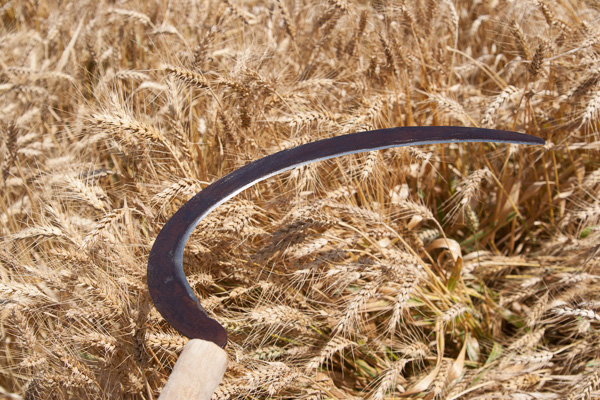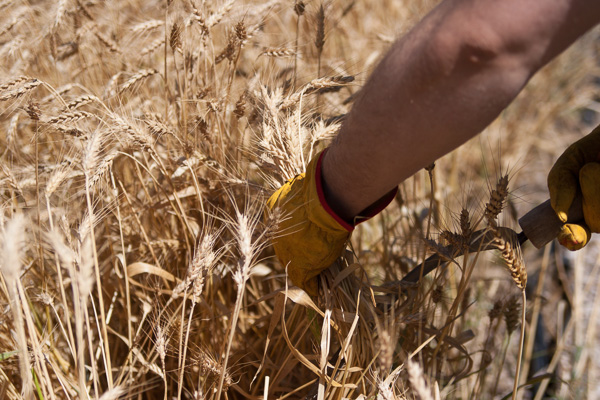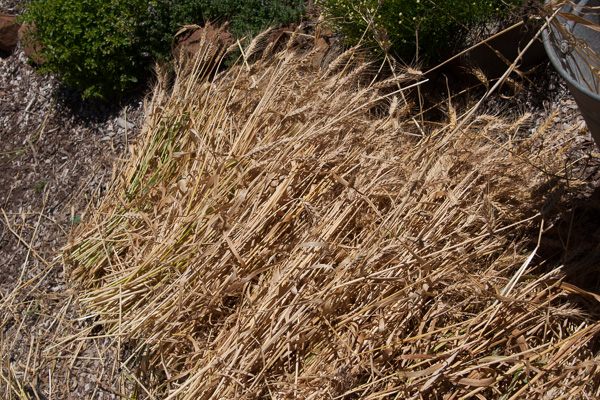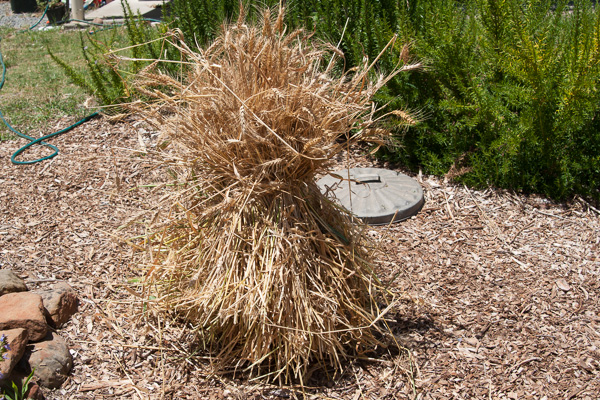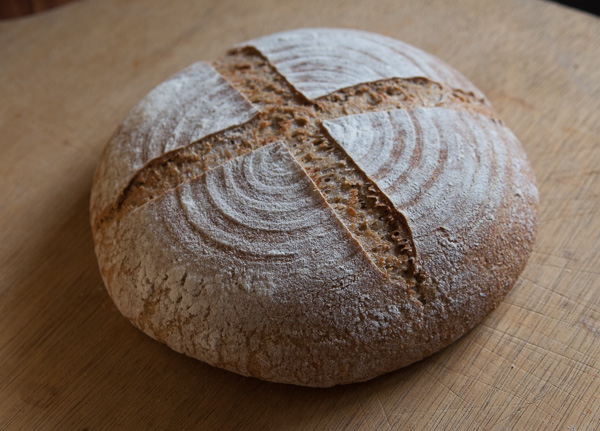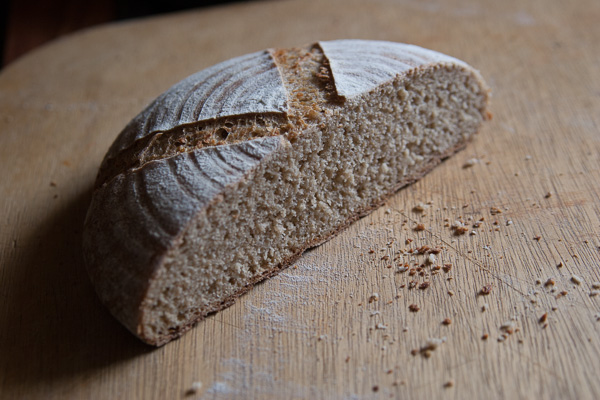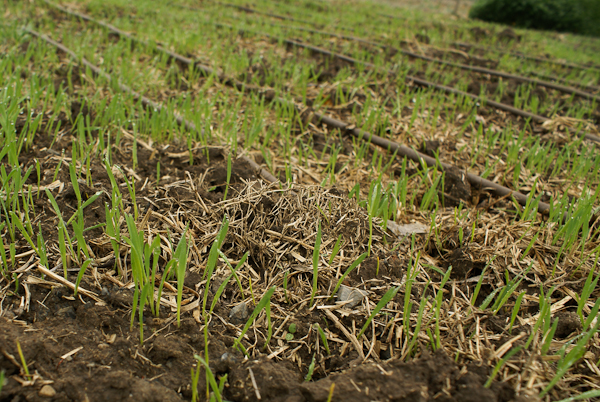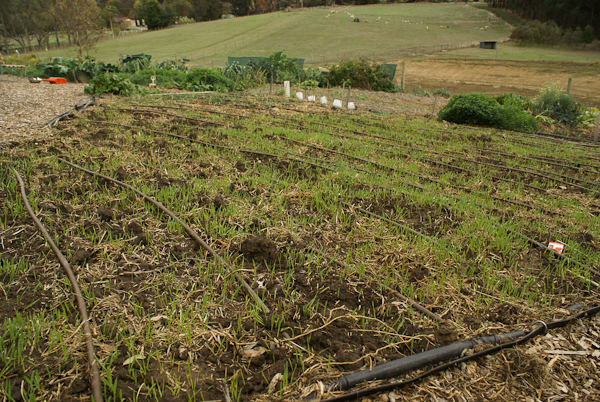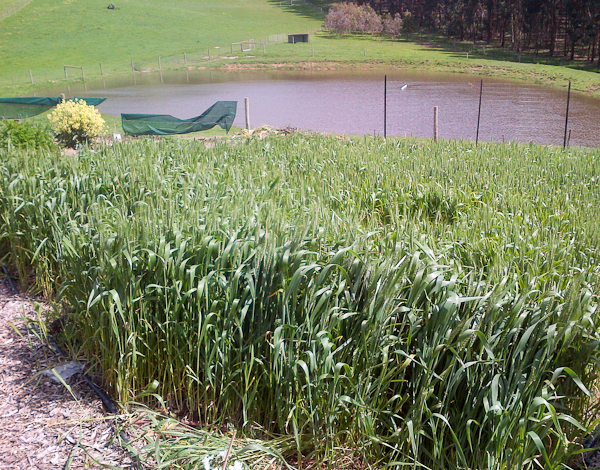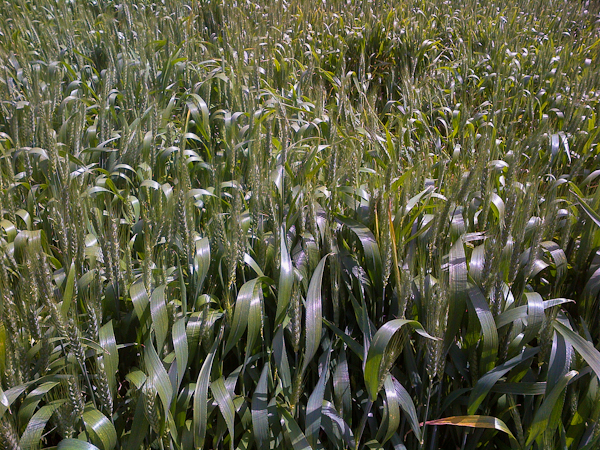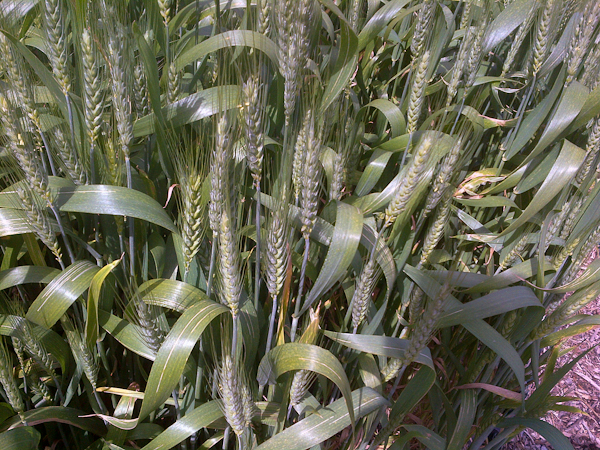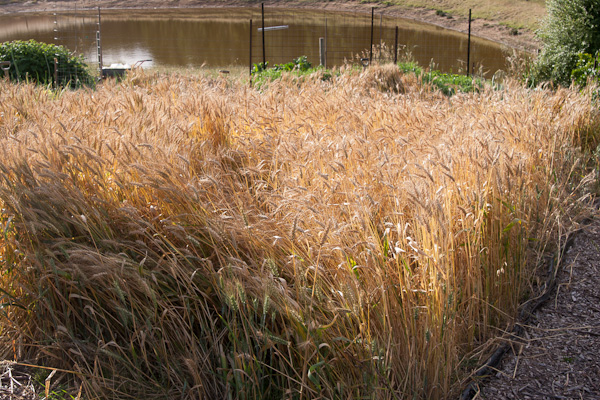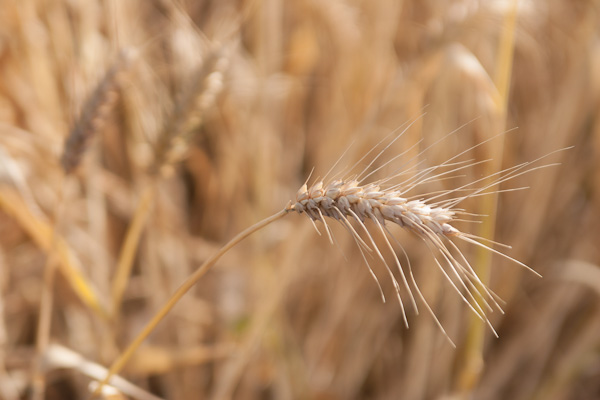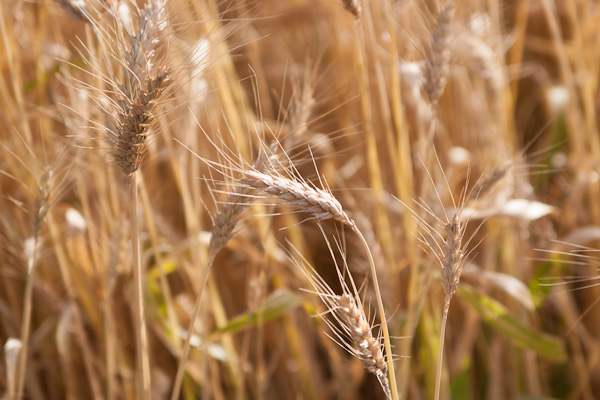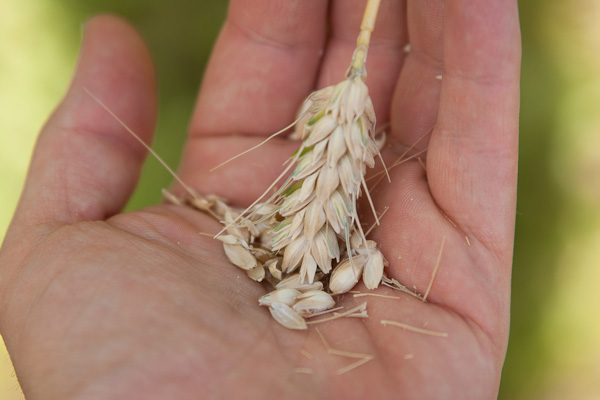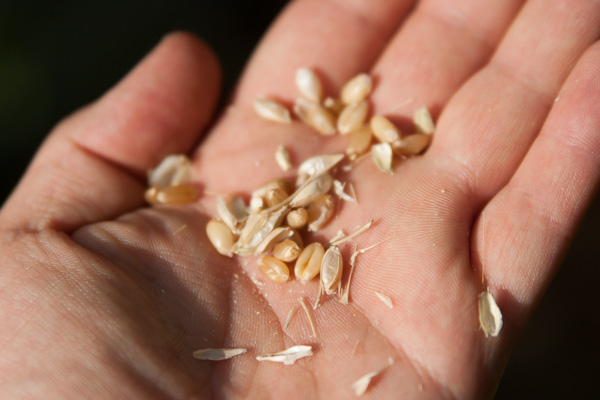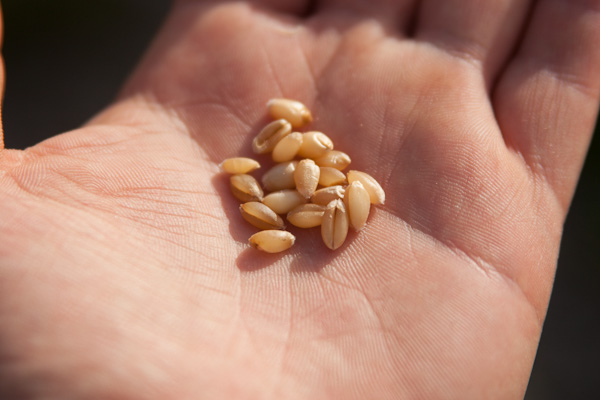Here’s some exciting news: I just spent a morning harvesting our first patch of wheat! Sweat, itch, straw and dust aside I am pretty excited to make the first loaf. At a very rough estimate I think we might have a yield around 1kg wheat per square meter so the 40m2 patch might have produced enough grain to make a years worth of bread. I’ll update this when the final count is in.
I used a beastly sharp sickle, and good gloves. I can see this thing lopping a finger right off.
First I tried cutting quite high to just get the heads but there was a lot of variation in the height of each stalk so I soon started just cutting at the base, grabbing bundles and sawing through them.
I laid down armfuls as I went, then gathered them into stooks at the end. The stooks were just to be romantic, I just chucked most of it on a tarp under cover. I’ll let it dry for a week before the next step.
Next is threshing, then winnowing. Threshing just means smacking the wheat, straw and all until the grain comes loose. Winnowing is separating the grain from the chaff, straw, bits of earwig and so on. There’s still work to do figuring out the best method for this! I did a small batch just to test by filling a feed bag and smacking it into the wall, then pouring the contents back and forth between two buckets so the wind carried chaff away. After doing this manually I firmly believe that growing and processing grains is the reason mankind invented machinery.
Finally, here it is – my very first loaf made from home grown wheat. Tastes delicious and feels very satisfying.
